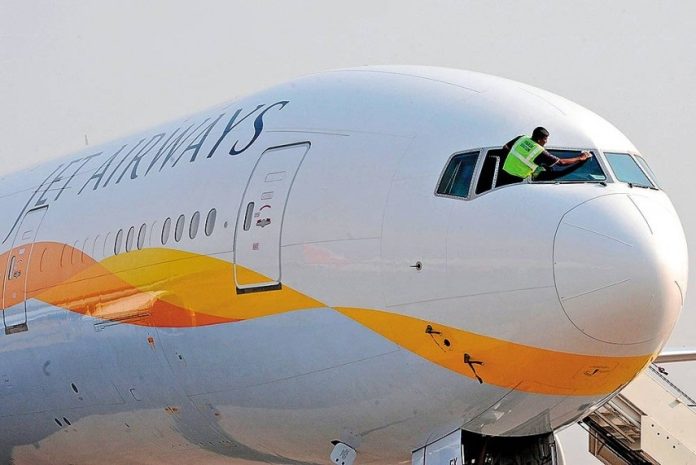This article is the second instalment of a two-part series. Read part 1 here.
For any sustainable business, revenues must be higher than their costs. This is especially true for airlines in price-sensitive markets like India.
For Jet Airways, their cost per available seat kilometre (CASK) exceeded their revenue per available seat kilometre (RASK) over a while.
That is, Jet Airways was operating at a loss per seat. For instance, as of December 2018, the loss per seat kilometre was INR (0.77).
In other words, the airline lost 0.77 paise on each seat it flew each kilometre. So if a flight was 1,000 km, the airline would lose INR 770 per ticket. And this situation where the airline loses money on every kilometre flown is just not sustainable.
A cost comparison (adjusted for stage lengths) reveals that Jet Airways had a cost base that was 30% – 35% higher than its low-cost competitors. But it was priced at levels similar to the low-cost airlines. Thus on the same fare levels, low-cost airlines could make money while Jet could not. Or in cases where Jet made money, the margins for low-cost carriers were much higher.
Add to that ancillary streams that were a source of significant revenue such as buy-on-board meals, strict baggage allowances, cancellation fees, seat-selection fees and special services. This is a stream that Jet did not have access to due to the nature of its business model. Yet again, the results showed in the numbers.
Year ending Net income (INR crores)
March 2010 969
March 2011 (123)
March 2012 (48)
March 2013 (366)
March 2014 (4,130)
March 2015 (2,097)
March 2016 1,212
March 2017 1,499
March 2018 (636)
Dec 2018 (3,319)
Source: company filings, estimates
Lack of a balance sheet focus proved to be fatal
Airlines are capital intensive. Starting from the multi-million dollar aircraft down to the baggage loading tractors, the requirements for equipment and manpower are significant. At the same time on an inflation-adjusted basis, the costs of air-travel keep going down, which means lower revenues for airlines. This, while being exposed to a variety of risks that are greater than other businesses. Against such a backdrop, airline capitalization and ensuring balance sheet strength is critical for success. It also positions the airline to withstand black swan events which in the airline business can have significant impacts.
In the case of Jet, one did not see this discipline. Despite IPO proceeds of 1899 crores, the airline’s debt doubled and then grew exponentially reaching 14,280 crores by 2010. 2014 brought some respite in that Etihad acquired a 24% stake in Jet Airways for INR 2,060 crores. The infusion was to help Jet bring down to approximately INR 9,000 crores. However, only 24% to 26% of the equity infusion was utilized towards debt repayment with the rest being taken up by the enormous working capital requirements of the company. Reasons for this were many, including short-term targets, lack of accountability and short management tenures.
Additional financial structuring did help including the sale of redemption points from the frequent flyer program, secondary leases of aircraft, sale and leasebacks, selling of a land parcel and additional credit lines. But the cash-drain continued. Because operations were not profitable and the balance sheet was weak. Consequently, loan quality, liability structures, liquidity, capital structure and unencumbered assets – all were in question. The airline did not have adequate assets for financing even current operations let alone for future growth.
A shutdown was inevitable.
Year ending Net debt (INR crores)
March 2010 1,344
March 2011 1,351
March 2012 1,969
March 2013 1,841
March 2014 8,714
March 2015 10,252
March 2016 9,231
March 2017 7,220
March 2018 5,295
Dec 2018 7,654
Source: company filings, estimates
A coherent strategy coupled with a clear, compelling vision never came
Until the suspension of operations, Jet was operating in one of the most lucrative aviation markets. With a 300 million-strong middle class, low air travel penetration and an increasing propensity to spend, India was targeting 500 million passenger trips in the next 20 years. Pre-Covid forecasts estimated that India would be the third-largest aviation within the next 6–7 years. Yet, the fact that bank lending never came and that Jet is still waiting for investors is quite revealing on the size and depth of the challenges.
As Jet faced challenges on all fronts, it was found wanting for a clear, coherent strategy. This was on its network, on aircraft, on financing, on value proposition and on costs. At various times Jet positioned itself for multiple segments. It priced as a low-cost carrier while offering a full-service product. It inducted A330s while having an all-Boeing fleet. It partnered with Etihad but reallocated capacity to a competing airline alliance. It flew on routes to compete with Singapore Airlines and Emirates but used a smaller aircraft type which led to a vastly different product experience. The strategy was confusing – to say the least. And it was increasingly driven by reactionary measures as opposed to a clearly defined goal.
In trying to be all things to all people, it ended up as just another airline, albeit with a much higher cost base. And in doing so, it cash-flows dried up to a point where a crash-landing was the only option.
As of this writing, the airline finds itself in the National Company Law Tribunal awaiting a decision on whether it will be sold or shut down. There has been an expression of interest from 4 shortlisted bidders but with each day that passes the chances of revival diminish.


